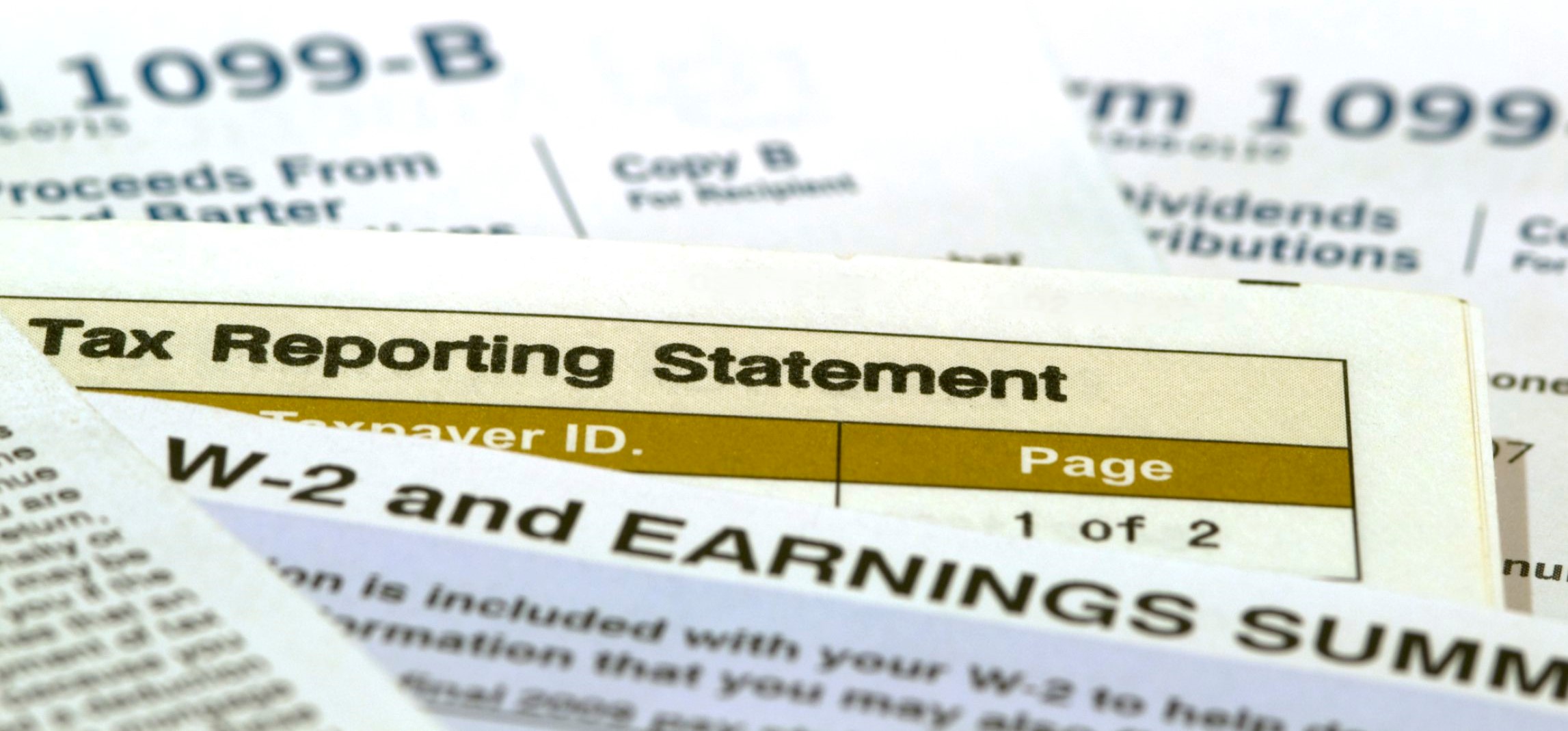A Field Guide to Common Tax Forms

As Nathan pointed out in his last Meridian Market Minute, tax forms are beginning to arrive in mailboxes across the country right about now. We do get a lot of questions about what forms are coming and when, so here is a list of common forms, what they mean, and what to do with them.
- Form W-2—this form needs no introduction as one of the most common annual tax forms. The Form W-2 records your wages, taxes withheld, and other paycheck information such as 401K contributions or taxable employee benefits. These forms must be postmarked by January 31, so these are usually some of the first to arrive in your mailbox.
- 1099INT, 1099DIV, and 1099B—these tax forms report your investment activity to the IRS. These generally must be postmarked by January 31, but often an extension until February 28 is needed for issuers to correctly compile the information.
- Form 1099INT reports taxable interest—these are becoming less common as they are not required to be printed and filed if the interest paid to you was under $10. And frankly, with the national average bank savings rate at .14%, most likely you aren’t making more than $10 of interest…interestingly, even if the bank does not report interest under $10 to you, in theory, you are still supposed to report it. Good luck scouring bank statements to add up the pennies earned… 😉
- Form 1099DIV reports taxable dividends. The dividends are split into qualified (which generally are dividends paid on US corporations and therefore eligible for the preferred tax rate of 15%) and nonqualified (dividends paid on foreign stocks, some mutual funds, and other non-preferred securities…taxable at your highest marginal tax rate). This division between qualified and nonqualified is what slows down the issuance of these forms. Mutual funds have until January 31 to report this information to the issuers of the 1099DIV forms, so the issuers have to wait to get the split between qualified and nonqualified before they can print and mail the forms.
- Form 1099B reports all taxable sales of securities, and often the taxable gain or loss amounts.
- 1099-MISC—this tax form reports self employment income, gambling winnings, and other miscellaneous income. It also must be postmarked by January 31.
- 1099-R—this form reports retirement plan distributions, and must be postmarked by January 31. This form causes a lot of confusion sometimes. Most instances, the form reports taxable distributions from a retirement plan (either a company plan like a 401K or an IRA)—and these amounts should be included on your tax return. However, some transfers of retirement plans—like when you rollover an old employer 401K to an IRA—trigger the sending company to issue a 1099-R. That doesn’t mean that the rollover is taxable. Instead, it just lets the IRS know that the assets left the plan. The receiving IRA may issue a Form 5498 (see #6 below) so the IRS can match up the distribution and the subsequent receipt. If the receiving plan does not issue a Form 5498, then the IRS may send an automated inquiry letter and you may need to provide proof that the funds were fully transferred to another qualified plan (the statement from the new account that show the deposit of the rollover check will be sufficient).
- Schedule K-1—these forms always generate ire among recipients. K-1s must be issued to beneficiaries of trusts or those that hold interests in LLCs, MLPs, ETPs and other investments with weird initials. These forms do not have to be postmarked until March 15th, so many investors simply forget about it, file their returns in February, and then get upset when they have to amend their return to include the K-1. While we generally applaud those taxpayers who file early, if you are the beneficiary of a trust or estate or have invested in one of the odd investments listed, you may want to sit back and relax until the middle of March (unless you want to amend your return later).
- Form 5498—this form also frequently confuses people. Form 5498 reports IRA rollover contributions, regular IRA contributions, and the market value of IRAs to the IRS. This form does not have to be postmarked until May 31, so this form usually shows up mid-May or so and freaks everyone out. The reason the 5498 comes out so late is that you have until the due date of your tax return (April 17, 2018 this year) to make an IRA contribution for 2017. So, IRA custodians can’t report the 2017 contributions until after the tax deadline passes. This form is informational only, so you should never have to amend your return to include this information (unless you forgot you made an IRA contribution and didn’t take your deduction). If you received a 1099-R for a plan rollover as referenced in item #4 above, then receiving the matching 5498 to show the offsetting contribution should be a relief.
There are too many other forms to name, but we hope that this helps you sort out what you are getting and why some arrive at different times than the others. Good luck to all the accountants out there, and happy tax season to you all!